本文
First tour report (Nishi-Mikawa)
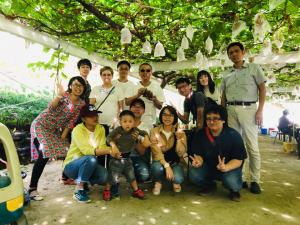
Aichi Prefecture is located near the center of the main island of Japan. Known for Nagoya city and Chubu Centrair International Airport, Aichi provides excellent access to both eastern and western Japan.
Blessed with a mild climate and rich water resources, Aichi has prosperous agriculture, forestry and fisheries that deserve much wider recognition.
Naturally, Aichi has its own distinctive and very enjoyable food culture, including Nagoya-meshi (local cuisine unique to Nagoya) and akamiso (dark-brown miso). As an additional pleasure, we advise savoring the ingredients themselves!
We have organized a free tour to experience the delights of Aichi agriculture, forestry and fishery products.
The first tour was held on Saturday, October 5, 2019 and participants visited various tourist attractions in the Nishi-Mikawa area, located in the center of Aichi Prefecture.
Participants enjoyed various activities, from a soba-making workshop and a visit to a fishing wattle built across a clear stream at Otogawa Yana in Okazaki City; grape picking at Okazaki Komadachi; to a visit of “Oasis Farm,” farmer’s store in Kariya Highway Oasis (a highway rest area), where they could buy local products as souvenirs.
9:10 Meet at Nagoya Station
10:15 Visit Otogawa Yana (23 Himukai, Awabuchi-cho, Okazaki City)
13:00 Grape picking at Okazaki Komadachi (62 Amayake, Komadachi-cho, Okazaki City)
15:20 Visit Kariya Highway Oasis (55 Yoshino, Higashizakai-cho, Kariya City)
The participants included Brazilians, Vietnamese and Peruvians living in Japan. Many spoke fluent Japanese or proactively made comments with broken Japanese, and their confidence strongly impressed our staff who hesitated to speak out in English!
During a bus trip, we had a lively conversation on various topics such as daily diet, impressions of Japanese foods, as well as the food culture of their home countries.
Their comments included:
“In Japan, fruits tend to be very sweet.”
“Eating Japanese food, I can feel that farmers make a lot of effort to improve it.”
“When I buy vegetables, I usually don’t care about their appearance at all.”
“At home, I often make dishes of my home country, but it’s hard to get the right seasonings to do that.”
Here are some snapshots of the visits:
1. Soba-making Workshop (at Otogawa Yana)
All the participants enjoyed their first-ever soba-making experience, using locally produced buckwheat flour from Nukata.
The process of soba-making is rather simple—mixing buckwheat flour, wheat flour and water to make dough, kneading the dough, rolling the dough out flat, and finally thinly chopping it to make soba noodles. However, making proper soba noodles is more difficult than you think!
The proprietress of Otogawa Yana agreed, saying, “soba-making shows your character.”
What soba-making shows, it seems, is one’s personal character rather than national character.
(Enjoying the aroma of soba.)
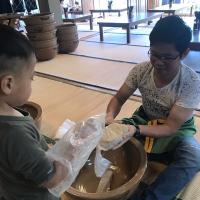
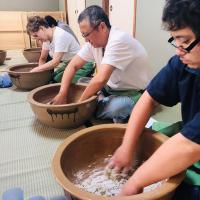
(They both were difficult—Kneading the dough to roll it out and sitting seiza style.)
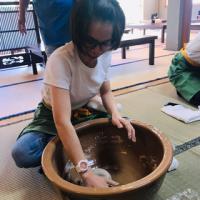
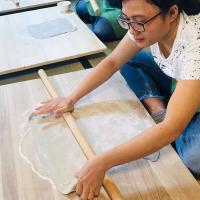
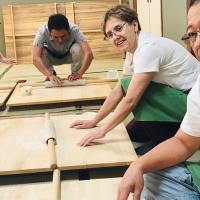
(Like in Japan, during New Year’s holidays people in Vietnam eat a dish made of dough. Also like in Japan, due to the growth of nuclear families and ready-made meals that can be bought in supermarkets, fewer and fewer households make this dish from scratch.)
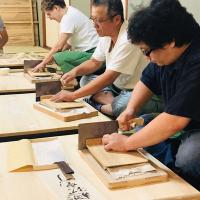
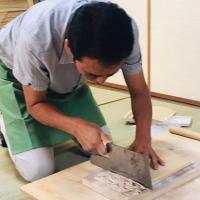
(For some participants, it was difficult to properly handle a Japanese kitchen knife, making the resulting noodles look like udon or kishimen, rather than soba.)
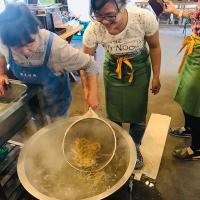
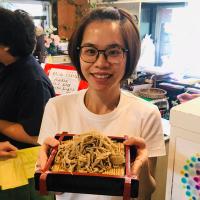
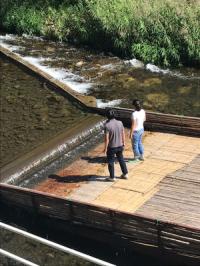
(After enjoying freshly-made soba, we visited a fishing wattle built across a clear stream.)
2. Grape Picking (at Okazaki Komadachi)
Everyone was surprised and impressed by the sweetness of the grapes produced in the vineyards here.
The grape varieties that can picked at Okazaki Komadachi are Wink and Akamine, with Wink being more popular since it is sweeter than the latter.
According to participants, grapes are produced in Vietnam, Peru and Brazil too, but they have never participated in grape picking in their home countries. They fully enjoyed the grape picking experience, saying “It’s fun!” as well as “I wish I could have eaten more!”
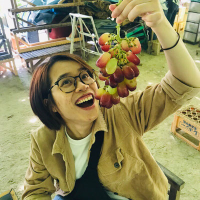
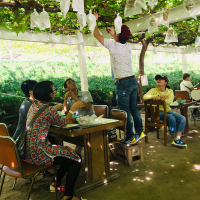
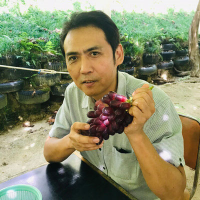
(Everyone enjoyed the grapes till they were full.)
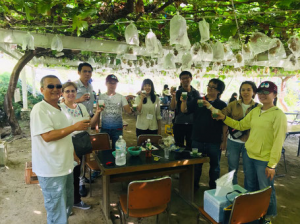
(Mulberry leaf tea from Toyota City was introduced, accompanied by a lecture on the history of the rise and fall of the silk-worm industry, various uses of mulberry leaves, issues faced by Japanese agriculture, as well as efforts to transform agriculture into the sixth sector of the economy.)
3. Visit to Farmer’s Store and Souvenir Shopping (Kariya Highway Oasis/Oasis Farm)
Many participants knew of Kariya Highway Oasis, but few knew that there is a farmer’s store there.
They were surprised by the cheap prices and good quality of flowers sold at the entrance, as well as the wide variety of vegetables and fruits offered.
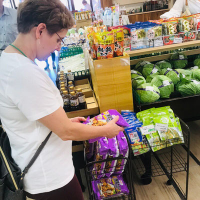
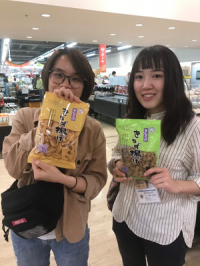
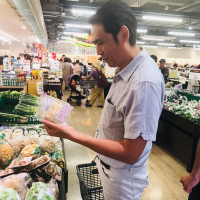
Fruits were very popular. Some said it was more fun than going to their ordinary supermarkets.
They were impressed by the cheap price of fish.
It is said that Japanese food is booming and I have been assuming that the most popular Japanese food is sushi. However, when asked, everyone said, “I love ramen!”
People have their own preferences—Some preferred tonkotsu (pork bone broth) ramen while others loved soy sauce or salt ramen—but I felt that everyone fully appreciated Japanese food in their own way.
By the way, they all agreed that Japanese meat is wonderful.
This comment made me laugh since this tour was rather vegetarian with only soba and grapes.
Thank you everyone very much for your active participation!
We plan to hold the next tour on Sunday, December 8, 2019.
In the next tour, we will learn more about “brewing,” an important food culture of Aichi Prefecture.
We also visit a farm where tropical fruits such as bananas and papayas are raised.
I look forward to seeing you at the next tour!





